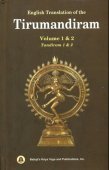Matted lock: 1 definition
Introduction:
Matted lock means something in Hinduism, Sanskrit. If you want to know the exact meaning, history, etymology or English translation of this term then check out the descriptions on this page. Add your comment or reference to a book if you want to contribute to this summary article.
Images (photo gallery)
In Hinduism
Yoga (school of philosophy)
Source: ORA: Amanaska (king of all yogas): A Critical Edition and Annotated Translation by Jason BirchMatted Lock are denoted by the Sanskrit term Jaṭā, according to the Amanaska Yoga treatise dealing with meditation, absorption, yogic powers and liberation.—Accordingly, as Īśvara says to Vāmadeva: “[...] Putting on ochre garments, carrying a skull, plucking out clumps of hair, maintaining non-vedic religious observances, ashes, ascetic clothing and matted locks (jaṭā), behaving as if mad, [the ascetic practice of] nakedness, [studying] the Vedas, Tantras and so on and the meeting [of learned people] for [reciting] poetry in the assembly: All [this] is exertion for the sake of filling one's stomach and is not the cause of the highest good. [...]”.

Yoga is originally considered a branch of Hindu philosophy (astika), but both ancient and modern Yoga combine the physical, mental and spiritual. Yoga teaches various physical techniques also known as āsanas (postures), used for various purposes (eg., meditation, contemplation, relaxation).
See also (Relevant definitions)
Query error!
Full-text (+183): Jata, Kapartti, Jatalya, Kaparttam, Sundarar, Kesava, Piraveni, Bhasma, Jatajuta, Puricatai, Jatabhara, Ardhajata, Kankaiperron, Virabhadra, Cataippinnal, Jatadhara, Turccati, Prasadhaka, Dutavara, Sarvakaryaprasadhaka.
Relevant text
Search found 62 books and stories containing Matted lock, Matted locks; (plurals include: Matted locks, Matted lockses). You can also click to the full overview containing English textual excerpts. Below are direct links for the most relevant articles:
Mahabharata (English) (by Kisari Mohan Ganguli)
section LVI < [Anugita Parva]
Section LXXX < [Abhimanyu-badha Parva]
Section CXXXVI < [Tirtha-yatra Parva]
Bhagavata Purana (by G. V. Tagare)
Chapter 5 - Destruction of Dakṣa’s Sacrifice < [Book 4 - Fourth Skandha]
Chapter 4 - Liberation of the Lord of Elephants < [Book 8 - Eighth Skandha]
Chapter 4 - Satī’s Self-immolation by Yoga < [Book 4 - Fourth Skandha]
Jainism in Odisha (Orissa) (by Ashis Ranjan Sahoo)
Odisha State Museum, Bhubaneswar < [Chapter 3: Survey of Jaina Antiquities in Odisha]
Jagannatha Temple at Dolamundai, Cuttack Town < [Chapter 3: Survey of Jaina Antiquities in Odisha]
Jaina Antiquities at Panchagaon (Khordha) < [Chapter 3: Survey of Jaina Antiquities in Odisha]
Tiruvaymoli (Thiruvaimozhi): English translation (by S. Satyamurthi Ayyangar)
Pasuram 3.4.8 < [Section 4 - Fourth Tiruvaymoli (Pukalum nal oruvan)]
Pasuram 7.5.7 < [Section 5 - Fifth Tiruvaymoli (Karpar-irama-piranai)]
Pasuram 3.6.4 < [Section 6 - Sixth Tiruvaymoli (Ceyya Tamaraik Kannan Ay)]
Brihad Bhagavatamrita (commentary) (by Śrī Śrīmad Bhaktivedānta Nārāyana Gosvāmī Mahārāja)
Verse 2.2.109 < [Chapter 2 - Jñāna (knowledge)]
Verse 2.3.50 < [Chapter 3 - Bhajana (loving service)]
Manusmriti with the Commentary of Medhatithi (by Ganganatha Jha)
Verse 11.128 < [Section XIV - Expiation for the killing of a Kṣatriya, or a Vaiśya or a Śūdra]
Verse 6.6 < [Section III - Details of the Hermit’s Life]
Verse 7.153 < [Section XII - Daily Routine of Work]
Related products

